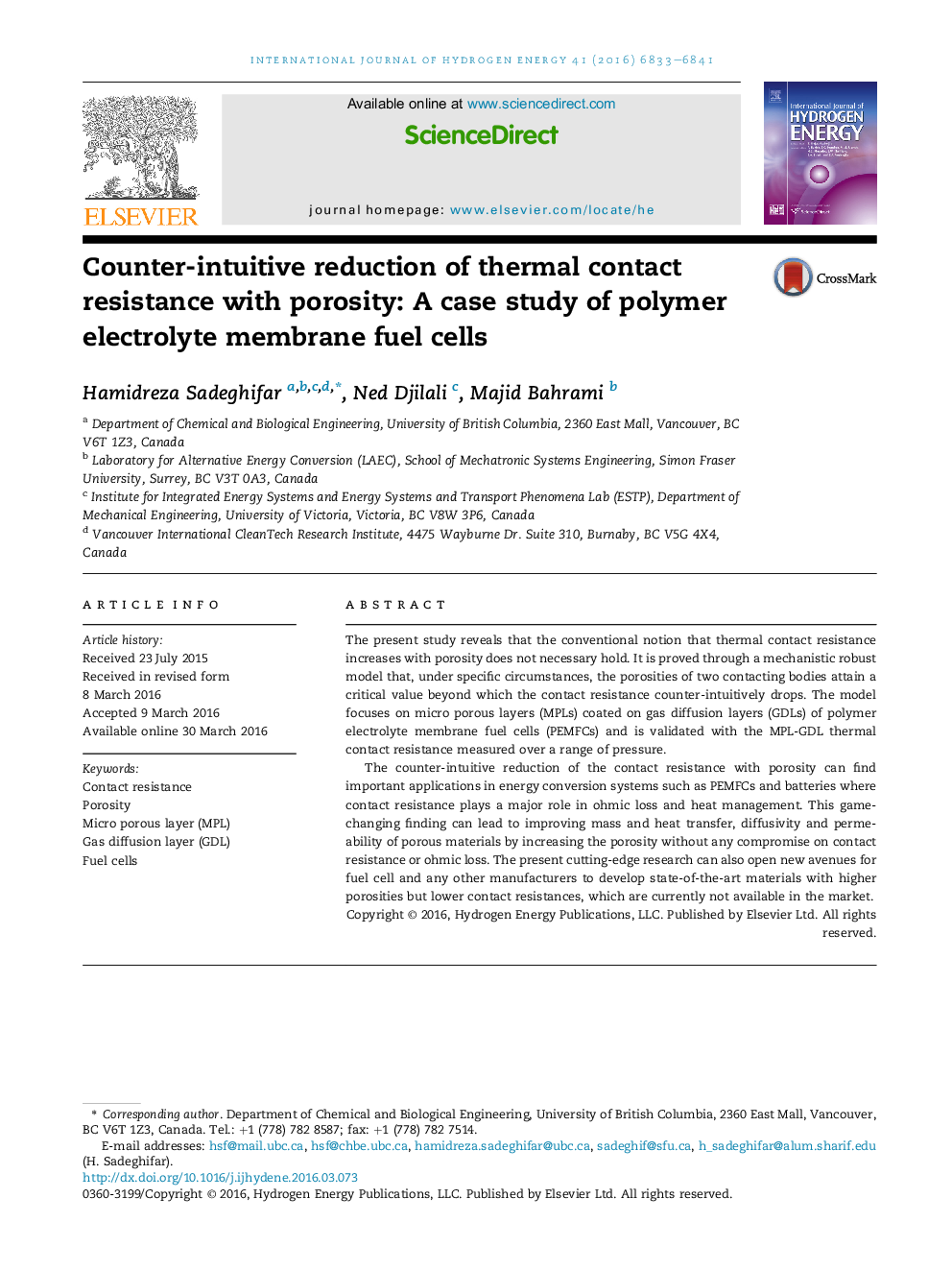| Article ID | Journal | Published Year | Pages | File Type |
|---|---|---|---|---|
| 1270689 | International Journal of Hydrogen Energy | 2016 | 9 Pages |
•Developing an analytic model for thermal contact resistance (TCR) of GDLs with MPLs.•It is shown how TCR changes with porosities of GDLs and MPLs of fuel cells.•TCR may counter-intuitively decrease with porosities of two mating porous media.•The reduction of TCR with porosity may occur at high porosity and low pressure.•The conventional notion that TCR increases with porosity does not necessarily hold.
The present study reveals that the conventional notion that thermal contact resistance increases with porosity does not necessary hold. It is proved through a mechanistic robust model that, under specific circumstances, the porosities of two contacting bodies attain a critical value beyond which the contact resistance counter-intuitively drops. The model focuses on micro porous layers (MPLs) coated on gas diffusion layers (GDLs) of polymer electrolyte membrane fuel cells (PEMFCs) and is validated with the MPL-GDL thermal contact resistance measured over a range of pressure.The counter-intuitive reduction of the contact resistance with porosity can find important applications in energy conversion systems such as PEMFCs and batteries where contact resistance plays a major role in ohmic loss and heat management. This game-changing finding can lead to improving mass and heat transfer, diffusivity and permeability of porous materials by increasing the porosity without any compromise on contact resistance or ohmic loss. The present cutting-edge research can also open new avenues for fuel cell and any other manufacturers to develop state-of-the-art materials with higher porosities but lower contact resistances, which are currently not available in the market.
Graphical abstractFigure optionsDownload full-size imageDownload as PowerPoint slide
